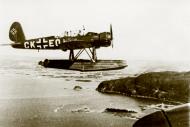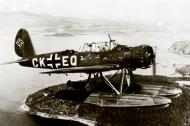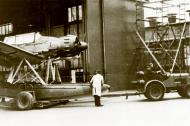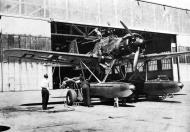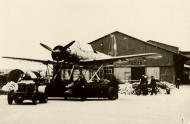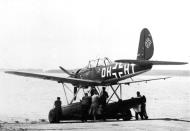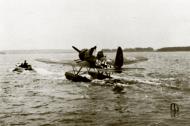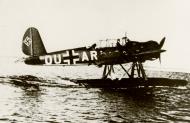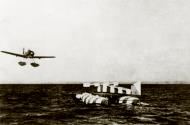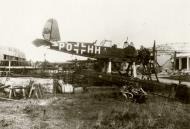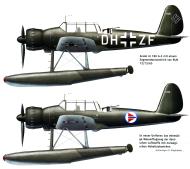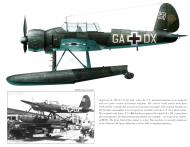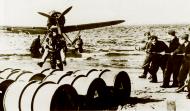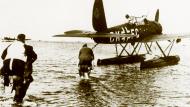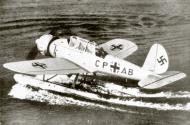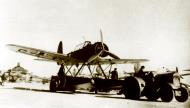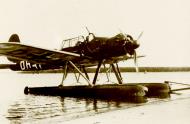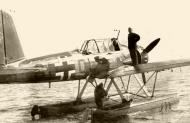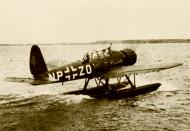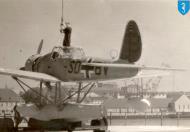Arado Ar 196A2 Stammkennzeichen Stkz CKEQ Norway 1941 01
Arado Ar 196A2 Stammkennzeichen Stkz CKEQ Norway 1941 02
Arado Ar 196A2 Stammkennzeichen Stkz CKEQ Norway 1941 0A
Arado Ar 196A2 Stammkennzeichen Stkz DHHT 01
Arado Ar 196A2 Stammkennzeichen Stkz DHHT 02
Arado Ar 196A2 Stammkennzeichen Stkz DHHT 03
Arado Ar 196A2 Stammkennzeichen Stkz DHHT 04
Arado Ar 196A2 Stammkennzeichen Stkz DHHT 05
Arado Ar 196A2 Stammkennzeichen Stkz DHHT 0A
Arado Ar 196A2 Stammkennzeichen Stkz OUAR Germany 1940 01
Arado Ar 196A2 Stammkennzeichen Stkz OUAR Germany 1940 02
Arado Ar 196A2 Stammkennzeichen Stkz OUAR Germany 1940 0A
Arado Ar 196A2 Stammkennzeichen Stkz POHH Kiel 1940 01
Arado Ar 196A2 Stammkennzeichen Stkz POHH Kiel 1940 0A
Arado Ar 196A3 Stammkennzeichen Stkz DHZF WNr 1006 0A
Arado Ar 196A5 1./BoFlGr196 T3BH became GADX now at NAS Silver Hill Museum 0A
Arado Ar 196A Stammkennzeichen Stkz CKFC crew being carried from their aircraft 01
Arado Ar 196A Stammkennzeichen Stkz CKFC crew being carried to their aircraft 01
Arado Ar 196A Stammkennzeichen Stkz CKFC Kiel Germany 1940 0A
Arado Ar 196A Stammkennzeichen Stkz CPAB 01
Arado Ar 196A Stammkennzeichen Stkz CUAD 01
Arado Ar 196A Stammkennzeichen Stkz DH 01
Arado Ar 196A Stammkennzeichen Stkz GICL 01
Arado Ar 196 seaplane
Role: Reconnaissance aircraft
Manufacturer: Arado Flugzeugwerke
Manufactured: Warnemünde factory, Germany
Designer: Walter Blume
First flight: May 1937
Introduction: November, 1938
Primary user: Kriegsmarine
Foreign users: Bulgarian Air Force, Finnish Air Force, Romanian Air Force
Produced: 1938–44
Number built: 541
Arado Ar 196
The Ar 196 was a shipboard reconnaissance aircraft built by the German firm Arado starting in 1936. The next year it was selected as the winner of a design contest, and became the standard aircraft of the Kriegsmarine (German Navy) throughout World War II.
Design and development
In 1933, the Kriegsmarine looked for a standardized shipboard reconnaissance aircraft. After a brief selection period, the Reichsluftfahrtministerium (German Air Ministry, RLM) decided on the Heinkel He 60 biplane. This was one of a line of developments of a basic biplane airframe that appeared as a number of floatplanes, trainers, and fighters. Deliveries started in a matter of months.
By 1935, it was clear that the He 60's performance was lacking, and the RLM asked Heinkel to design its replacement. The result was the He 114. The first prototype was powered by the Daimler-Benz DB 600 inline engine, but it was clear that supplies of this engine would be limited, and the production versions turned to the BMW 132 radial engine instead.
The plane proved to have only slightly better performance than the He 60, and its sea-handling was poor. Rushed modifications resulted in a series of nine prototypes in an attempt to solve some of the problems, but they didn't help much. The Navy gave up, and the planes were eventually sold off to Romania, Spain and Sweden.
In October 1936, the RLM asked for a He 114 replacement. The only stipulations were that it would use the BMW 132, and they wanted prototypes in both twin-float and single-float configurations. Designs were received from Dornier, Gotha, Arado and Focke-Wulf. Heinkel declined to tender, thinking that the 114 could still be made to work.
With the exception of the Arado design, they were all conventional biplanes. That gave the Arado better performance than any of the others, and the RLM ordered four prototypes. The RLM was also rather conservative by nature, so they also ordered two of the Focke-Wulf Fw 62 design as a backup. It quickly became clear that the Arado would work effectively, and only four prototypes of the Fw 62 were built.
The Ar 196 prototypes were all delivered in summer 1937, V1 (which flew in May) and V2 with twin floats as A models, and V3 and V4 on a single float as B models. Both versions demonstrated excellent water handling, and there seemed to be little to decide one over the other. Since there was a possibility of the smaller outrigger floats on the B models 'digging in', the twin-float A model was ordered into production. A single additional prototype, V5, was produced in November 1938 to test final changes.
Ten A-0s were delivered in November and December 1938, with a single 7.92 mm (.312 in) MG 15 machine gun at the rear seat for defence. Five similarly equipped B-0s were also delivered to land-based squadrons. This was followed by 20 A-1 production models starting in June 1939, enough to equip the surface fleet.
Starting in November, production switched to the heavier land-based A-2 model. It added shackles for two 50 kg (110 lb) bombs, two 20 mm MG FF cannon in the wings, and a 7.92 mm (.312 in) MG 17 machine gun in the cowling. The A-4 replaced it in December 1940, strengthening the airframe, adding another radio, and switching propellers to a VDM model. The apparently misnumbered A-3, which had additional strengthening of the airframe, replaced the A-4. The final production version was the A-5 from 1943, which changed radios and cockpit instruments, switched the rear gun to the much-improved MG 81Z with 2000 rounds of ammunition, retrofitted the existing cannon to the MG FF/M with extended 90 round magazines, added armour protection for the pilot and observer and strengthened the airframe. The A-5 also upgraded engine type to BMW 132W.[1] Overall, 541 Ar 196s (15 prototypes and 526 production models) were built before production ended in August 1944, about 100 of these from SNCA and Fokker plants.
The Ar 196C was a proposed aerodynamically-refined version. The Ar 196C project was cancelled in 1941.
Operational history
The airplane was loved by its pilots, who found that it handled well both in the air and on the water. With the loss of the German surface fleet, the A-1s were added to coastal squadrons and continued to fly reconnaissance missions and submarine hunts into late 1944. Two notable operations were the capture of HMS Seal, and the repeated interception of Royal Air Force Armstrong-Whitworth Whitley bombers. Although it was no match for a fighter, it was considerably better than its Allied counterparts, and generally considered the best of its class. Owing to its good handling on water, the Finnish Air Force utilized Ar 196 A-3s which were later upgraded to A-5s in mid-1944 for reconnaissance duties as well as supply runs, several troops could fit inside its fuselage. The Fins also fitted their Arados with extra bomb shackles to increase it's carrying load to up to four 100 kg bombs.[2]
Two Arado Ar 196s were brought to Penang in Japanese-occupied Malaya aboard the auxiliary cruisers Thor and Michel in the early 1940s. In March of 1944, along with a Japanese Aichi E13A, these seaplanes formed the newly-created East Asia Naval Special Service to assist both the German Monsun Gruppe and Japanese naval forces in the area. The aircraft were painted in Japanese livery and were operated by Luftwaffe pilots under the command of Oberleutnant Ulrich Horn. [3]
Arado in Allied hands
The first Arado Ar 196 to fall into allied hands was an example belonging to the German cruiser Admiral Hipper captured in Lyngstad by a Norwegian Marinens Flyvebaatfabrikk M.F.11 seaplane of the Trøndelag naval district on 8 April 1940, at the dawn of the Norwegian Campaign. After being towed to Kristiansund by the torpedo boat HNoMS Sild, it was used against its former owners, flying with Norwegian markings[2]. At 0330 on April 18, the Arado was evacuated to the UK by a Royal Norwegian Navy Air Service pilot. The plane was shortly thereafter crashed by a British pilot while on transit to the Helensburgh naval air base for testing[3]. At the end of the war, at least another Arado Ar 196 was left at a Norwegian airfield and kept in use as a liaison aircraft by the Royal Norwegian Air Force for a year on the West coast.
Another Arado was captured by the Hellenic Navy during the German invasion of Greece when in ealy April 1941 an Bordfliegergruppe Arado 196 had been forced to land alongside the coastal town of Peraia due to a ruptured fuel line. The Arado was captured, evaluated and ultimately painted with Hellenic markings of the Πολεμική Αεροπορία (Royal Hellenic Air Force) and flown against the Luftwaffe due to its relative modernity compared to types that Greece was operating at the time.[6]
During 1944-45, Soviet forces captured numerous Arados along the Baltic coast of Poland and Germany. At Dassow a spare parts depot was recovered also. After repairs, thirty-seven Arado Ar 96 aircraft fitted with Soviet radio equipment were integrated into the aviation element of the Soviet Border Guard. They were sent to Baltic, Black Sea and Pacific coastal areas, serving until 1955.[7]
Operators
Bulgaria - Bulgarian Air Force
Finland - Finnish Air Force
Germany - Kriegsmarine/Luftwaffe
Greece - Royal Hellenic Air Force[6]
Norway - (war booty) Royal Norwegian Navy Air Service Royal Norwegian Air Force
Romania - Romanian Air Force[8]
Survivors
Ar 196 A-3
Aircraft operated by Bulgarian Air Force is displayed at the Museum of Aviation and the Air Force, Plovdiv, Bulgaria.Ar 196 A-5, Werknummer of 623 167
Aircraft formerly equipped the German cruiser Prinz Eugen is displayed at the National Air and Space Museum, USA.[9]Ar 196 A-5, Werknummer of 623 183
Another aircraft from the Prinz Eugen was displayed from 1949 to 1995 at the Naval Air Station Willow Grove, Pennsylvania and subsequently transferred to the National Naval Aviation Museum at Naval Air Station Pensacola, Florida. The upper fuselage and canopy were damaged during transit, and it remained in storage awaiting restoration. In December 2012, it was packed into containers and shipped to Nordholz, Germany. Restoration began in August 2013, in time for that city's celebration for 100 years of German naval aviation. The plane, on long term loan from the National Naval Aviation Museum, will eventually be displayed at the Naval Air Wing 3 (Marinefliegergeschwader 3) headquarters at Nordholz Naval Airbase.[10][11]The Aircraft Historical Museum, Sola, Norway, has on display an Ar 196 A-2 fuselage frame raised from the wreck of the German cruiser Blücher in Oslofjord
Another aircraft is known to lie in the Jonsvatnet, a lake near Trondheim in Norway. A number of wartime German aircraft have been recovered from the lake, but the Ar 196 remains undisturbed as its crew were killed when it crashed there in 1940 and it has the status of a War Grave.
A wrecked Arado Ar 196 A-3, believed to be D1 + EH, was snagged by a fishing trawler off the island of Irakleia in 1982 at a depth of 91 meters. It was towed out of the fishing lanes to shallower waters (about 11 meters). The upside-down plane, with fuselage and wings mostly intact, has become a popular spot for Scuba diving.[12]
Specifications (Ar 196 A-2)[13]
General characteristics
* Crew: Two (pilot and observer)
* Length: 11.0 m (36 ft 1 in)
* Wingspan: 12.4 m (40 ft 0 in)
* Height: 4.45 m (14 ft 7 in)
* Wing area: 28.4 m² (306 ft²)
* Empty weight: 2,990 kg (6,592 lb)
* Max takeoff weight: 3,720 kg (8,200 lb)
* Powerplant: 1× BMW 132K 9-cylinder radial engine, 960 PS (706 kW, 947 hp)Performance
* Maximum speed: 311 km/h (193 mph)
* Range: 1,080 km (670 mi)
* Service ceiling: 7,010 m (23,000 ft)
* Rate of climb: 300 m/min (980 ft/min)
* Wing loading: 98.2 kg/m² (20.1 lb/ft²)
* Power/mass: 167 W/kg (0.101 hp/lb)Armament
Guns:
* 1 × 7.92 mm (0.312 in) MG 15 machine gun
* 1 × 7.92 mm (0.312 in) MG 17 machine gun
* 2 × 20 mm MG FF cannons
Bombs: 2 × 50 kg (110 lb) bombsSpecifications (Ar 196 A-5)[13]
General characteristics
* Crew: Two (pilot and observer)
* Length: 11.0 m (36 ft 1 in)
* Wingspan: 12.4 m (40 ft 0 in)
* Height: 4.45 m (14 ft 7 in)
* Wing area: 28.4 m² (306 ft²)
* Empty weight: 2,990 kg (6,592 lb)
* Max takeoff weight: 3,720 kg (8,200 lb)
* Powerplant: 1 × BMW 132W 9-cylinder air-cooled radial piston engine, 782 kW (1,050 hp)Performance
* Maximum speed: 332 km/h (206 mph, 179 kn)
* Range: 1,080 km (670 mi)
* Service ceiling: 7,010 m (23,000 ft)
* Rate of climb: 6 m/s (1,200 ft/min)
* Wing loading: 98.2 kg/m² (20.1 lb/ft²)
* Power/mass: 0.235 kW/kg ( 0.143 hp/lb)Armament
Guns:
* 1 × 7.92 mm (0.312 in) MG 81Z machine gun
* 1 × 7.92 mm (0.312 in) MG 17 machine gun
* 2 × 20 mm (0.787 in) MG FF/M cannonBombs:
2 × 50 kg (110 lb) bombs
(Finnish model) 4 x 100 kg (220.462 lb) bombs
Additional Research:
Bismarck carried: T3+AK, T3+DL, T3+IH and T3+MJ
Tirpitz carried: BB+YF, T3+BL, T3+DL, T3+GK, T3+HK, T3+LH and T3+LK
Scharnhorst: T3+DH, T3+EH, and T3+FM
Gniesenau:?
Admiral Sheer: T3+BH, T3+EL
Admiral Graf Spee:?
Deutschland/Lützow:?
Prinz Eugen: T3+KH, T3+MH, T3+CH, T3+LH
Admiral Hipper: 6W+AN, T3+DH, T3+HK and T3+MH who was sunk when damaged
Blücher:?Auxiliary cruisers, also called armed merchant HSK 1 to 10
HSK1 Orion:?
HSK4 Thor:?
HSK5 Pinguin:?
HSK6 Stier:?
HSK7 Komet:?
HSK8 Kormoran:?
HSK9 Michel:?Prototypes:
V1 - A series, flew summer 1937
V2 - A series, flew summer 1937
V3 - B series, single float
V4 - B series, single float
V5 - B series, single float, flew autumn 1938Models:
Ar 196A-0 - 10 delivered 11.38 - 12.38
Ar 196A-1 - 20 delivered from 6.39
Ar 196A-2 - delivered from 11.39, first production model with the fixed forward firing armament of 2 20-mm and 1 7.9-mm
Ar 196A-4 - delivered from 12.40, strengthened structure, additional radio (FuG 16Z), air-screw spinner
Ar 196A-3 - delivered from 3.41, strengthened structure
Ar 196A-5 - delivered from 3.43, improved radio equipment (FuG 16Z and FuG 25a, later supplanted by FuG 141), the flexibly-mounted MG 15 in the rear cockpit giving place to an MG 81Z (twin 7.9-mm MG 81s) with 2000 rounds.
Ar 196B-0 - 10 delivered 1940-41, single floats
Ar 196C - projectProduction:
1938: Arado (Warnemünde), 10
1939: Arado (Warnemünde), 40
1940: Arado (Warnemünde), 98
1941: Arado (Warnemünde), 97
1942: Arado (Warnemünde), 94; S.N.C.A. (St. Nazaire), 13
1943: Arado (Warnemünde), 83; S.N.C.A. (St. Nazaire), 10; Fokker (Amsterdam), 11
1944: Arado (Warnemünde), 22; Fokker (Amsterdam), 58Units:
2./Seeaufklärungsgruppe 125 had 9 Arado 196s in autumn 1943 the unit was renamed to 4./SAGr.126; Suda were still in a sea-detachment with a Do 24 and three Cannot 506s of the Italian Seefliegerstaffel 288 who used the codes (7R + BK), (7R + CK), (7R + IK), (7R + GK), (7R + HK), (7R + MK)
| Unit | Location | Commander | Aircraft | Strength/Serviceable |
|---|---|---|---|---|
Führer des Luftstreitkräfte, West |
||||
| Küstenfliegergruppe 106 | Obstl. Jordan | |||
| 1./KüFIGr. 106 | Norderney | Hptm. von Schrötter | He 60 | 10/10 |
| 2./KüFIGr. 106 | Norderney | Obstl. Bischoff | Do 18 | 12/12 |
| 3./KüFIGr. 106 | Borkum | Major Horn | He 59 | 10/10 |
| Subordinated: | ||||
| 3./KüFIGr.706 | Norderney | Hptm. Stein | He 59 | 12/12 |
| Küstenfliegergruppe 306 | Obslt. von Helleben | |||
| 2./KüFIGr. 306 | Hörnum | Hptm. von Roth | Do 18 | 12/11 |
| Subordinated: | ||||
| 2./KüFIGr. 506 | Hörnum | Hptm. Hartwig | Do 18 | 12/11 |
| 2./KüFIGr. 606 | Hörnum | Hptm. von Laue | Do 18 | 12/9 |
| Küstenfliegergruppe 406 | Major Minner | |||
| 1./KüFIGr. 406 | List | Hptm. Weisand | He 115 | 8/8 |
| 2./KüFIGr. 406 | List | Major Bartels | Do 18 | 12/10 |
| 3./KüFIGr. 406 | List | Hptm. Bergemann | He 59 | 9/9 |
| Subordinated: | ||||
| 1./Bordfliegergruppe 196 | Wilhemshaven | Major Lessing | He 60 | 12/12 |
Führer des Luftstreitkräfte, Ost |
||||
| Küstenfliegergruppe 506 | Obstlt. von Wild | |||
| 1./KüFIGr. 506 | Pillau | Hptm. Busch | He 60 | 12/11 |
| 3./KüFIGr. 506 | Pillau | Hptm. Fehling | He 59 | 10/9 |
| Küstenfliegergruppe 706 | Obstl. Edert | |||
| 1./KüFIGr. 706 | Nest | Major Kaiser | He 60 | 12/11 |
| Subordinated: | ||||
| 1./KüFIGr. 306 | Nest | Hptm. Heyn | He 60 | 12/11 |
| 5./BFlGr.l96 | Kiel-Holtenau | Hptm. Wibel | He 60 | 10/10 |
AIR COMMAND AND STAFF COLLEGE - AIR UNIVERSITY
LUFTWAFFE MARITIME OPERATIONS IN WORLD WAR II: THOUGHT, ORGANIZATION AND TECHNOLOGYby
Winston A. Gould, Major, USAFLuftwaffe Organization
Personalities notwithstanding, the Luftwaffe of 1939 was organized for success. The See-Luftstreitkrafte had developed a 'niche market,' albeit one of Reichsmarschall Goering’s design. Although unintended, the Luftwaffe general in charge of the See-Luftstreitkrafte, although performing an important role, was not truly in command of 'his' forces. The Luftwaffe was organized along the modern levels of war. The strategic level leaders concentrated on the long-term, 'big picture' strategy and conduct of the war, as poor as some of their decisions were.
The operational level leaders were given the task of planning and conducting operations within certain theaters and/or being responsible for a particular organizational function that covered different theaters. The tactical leadership of the Luftwaffe remained outstanding throughout World War II. However, the toll in experienced manpower placed unimaginable strains on the tactical airmen in leadership positions as the war ground on. The Germans, probably more than any other country during World War II, were adept at organizational flexibility. By organizing along cross-functional lines, the Luftwaffe built a combat structure that should have won the war in the Atlantic. Once more, though, their senior leadership and the deteriorating situation of a multiple front war placed too many demands on too few resources.
The See-Luftstreitkrafte
At the beginning of World War II, the Kriegsmarine had possession of a small naval air arm called the See-Luftstreitkrafte (literally Naval Air Arm). Admiral Raeder wanted a separate naval air force, under complete control of the OKM, to accomplish the full range of naval operations. The German naval staff recognized the potential of aviation and the ability of aircraft to scout and respond to changes in the naval tactical situation.31 A compromise existed between 1935 and 1939 when Reichsmarschall Goering decided to change the plan. In a memorandum between Reichsmarschall Goering and Admiral Raeder, the organization and responsibility of naval aviation was clarified. This agreement left the See-Luftstreitkrafte with responsibility for the conduct of aerial reconnaissance and direct aerial support of fleets in contact with the enemy. Admiral Raeder felt that he had to accept this agreement with the hope of fully developing the See-Luftstreitkrafte as time went along.
As part of this memorandum, the command of the See-Luftstreitkrafte rested with the OKL-Fuhrer der See-Luftstreitkrafte (Luftwaffe Commander of the Naval Air Arm). The OKLFuhrer der See-Luftstreitkrafte, Generalmajor Hans Ritter, reported to the CINC Luftwaffe and was the direct Luftwaffe liaison with the Kriegsmarine. The OKL-Fuhrer der See-Luftstreitkrafte primary duties were to prepare the Maritime Air Forces for operational use in cooperation with the Luftwaffe General Staff and Naval Command; and to supervise serviceability, supply and training of Maritime Air Forces in cooperation with the Luftwaffe Quartermaster General (Q.M.G.). At the beginning of the war in September, 1939, the See-Luftstreitkrafte had 14 Kustenfliegerstaffeln (Coastal Reconnaissance Squadrons), one Bordfliegergruppe (Ship-based flying squadron), BFGr 196, and one Tragerverbande (Aircraft Carrier Unit) under its’ operational control.35 This position was terminated 1 April 1939 and the See-Luftstreitkrafte was formally disbanded.
A new command and operational structure for maritime aerial operations was developed. The new position was the General der Luftwaffe beim Oberkommando der Kriegsmarine, or the General der Luft. The new structure created the Fuhrer der Luft West and the Fuhrer der Luft Ost (Commander of Air West and East, respectively). Each Fuhrer der Luft was tactically subordinate (under tactical control, or TACON, in modern parlance) to the Marineoberkommando West and Marineoberkommando Ost respectively, but administratively subordinate (under administrative control, or ADCON) to the General der Luft. The Marineoberkommando West was responsible for the North Sea, Eastern Scottish harbors, the area of West Norway-North Scotland-Iceland, the Denmark Strait and Greenland.
Marineoberkommando Ost’s area of responsibility included north of Norway and east to the White Sea, the Kola Peninsula, Murmansk, Archangel, the North Cape and Spitzbergen. (Each area had latitude and longitudinal limitations not included here) Each Marineoberkommando operationally reported to the OKM Operations staff, which meant that the CINC Kriegsmarine exercised operational control, or OPCON, over the assigned forces of each Fuhrer der Luft. Thus, the General der Luft was restricted to organizing and structuring units, and was often left 'out-of-the-loop' on operational matters concerning the forces he was organizing, training and equipping. This state of affairs remained until 1944 when the position was abolished with the remaining Kustenfliegerstaffeln and Bordfliegergruppe came under the control of the General der Aufklarungsflieger (General of Air Reconnaissance).
Article Reference: https://apps.dtic.mil/dtic/tr/fulltext/u2/a476401.pdf
Warnemünde Germany Map
Mosjoen harbor Norway Map
Citations: +
- Dabrowski, Hans-Peter; Koos, Volker (1997). Arado Ar 196. Germany: Schiffer Publishing, Ltd. ISBN 9780887404818.
- Keskinen, Kalevi; Stenman, Kari (1998). Finnish Air Force 1939-45. Squadron/Signal Publications. ISBN 0897473876.
- Horst H. Geerken (9 June 2017). Hitler's Asian Adventure. BoD – Books on Demand. pp. 375–376. ISBN 978-3-7386-3013-8.
- Sivertsen 1999: 105, 115–122
- Sivertsen 1999: 122
- Harousis, Hariton (2007). HELLENIC WINGS No 1: Hellenic Air Force 1940-1941. Amyntiki Grammi.
- Kotelnikov, V. Stalin's Captives article in Fly Past magazine, February 2017 pp102-4
- Frank Joseph, The Axis Air Forces: Flying in Support of the German Luftwaffe, ABC-CLIO, 2011, p. 166
- Smithsonian: National Air and Space Museum: Arado Ar 196 Archived November 11, 2013, at the Wayback Machine
- HCWinters (12 June 2013). "USA leihen Arado an das MFG aus". Cuxhavener Nachrichten. Archived from the original on 14 February 2015.
- Kriegsflugzeug kehrt nach Deutschland zurück". Die Welt.
- Bardanis, Manolis; Lino, von Garzten. "Die Geschichte der Arado 196 von Herakleaia" (PDF). naxosdiving.com. Naxos Diving. Archived from the original (PDF) on 14 February 2015.
- Dabrowski, Hans-Peter. Arado Ar 196 Waffen Arsenal, Berlin, Germany: Schiffer Publishing, Ltd., 1997. ISBN 9780887404818.
Bibliography: +
- Dabrowski, Hans-Peter and Koos, Volker. Arado Ar 196, Germany's Multi-Purpose Seaplane. Atglen, PA: Schiffer Publishing, 1993. ISBN 0-88740-481-2.
- Ledwoch, Janusz. Arado 196 (Militaria 53) (in Polish). Warszawa, Poland: Wydawnictwo Militaria, 1997. ISBN 83-86209-87-9.
- Sivertsen, Svein Carl (ed.) (1999). Jageren Sleipner i Romsdalsfjord sjøforsvarsdistrikt April 1940 (in Norwegian). Hundvåg: Sjømilitære Samfund ved Norsk Tidsskrift for Sjøvesen.
Magazine References: +
- Airfix Magazines (English) - http://www.airfix.com/
- Avions (French) - http://www.aerostories.org/~aerobiblio/rubrique10.html
- FlyPast (English) - http://www.flypast.com/
- Flugzeug Publikations GmbH (German) - http://vdmedien.com/flugzeug-publikations-gmbh-hersteller_verlag-vdm-heinz-nickel-33.html
- Flugzeug Classic (German) - http://www.flugzeugclassic.de/
- Klassiker (German) - http://shop.flugrevue.de/abo/klassiker-der-luftfahrt
- Le Fana de L'Aviation (French) - http://boutique.editions-lariviere.fr/site/abonnement-le-fana-de-l-aviation-626-4-6.html
- Le Fana de L'Aviation (French) - http://www.pdfmagazines.org/tags/Le+Fana+De+L+Aviation/
- Osprey (English) - http://www.ospreypublishing.com/
- Revi Magazines (Czech) - http://www.revi.cz/
Web References: +
- Wikipedia.org - http://en.wikipedia.org/wiki/Arado_Ar_196
 Editor for Asisbiz: Matthew Laird Acred
Editor for Asisbiz: Matthew Laird Acred
If you love our website please add a like on facebook
Please donate so we can make this site even better !!

